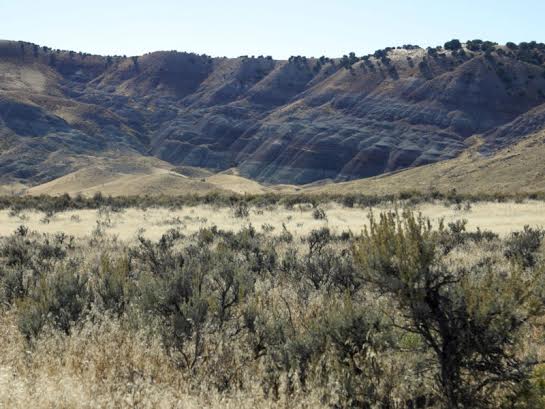Habitat
Stegosaurus remains have been found in the Morrison Formation of the United States and Canada, and they have also been
discovered in Portugal (Chure et al. 2006; Escaso
et al. 2007). One finding of
a fossil of this dinosaur links the two areas together during
the Late Jurassic time period since the remains are so similar
to each other (Escaso et al. 2006). If we remember how all of the
continents were once together in one formation called Pangea
then these findings make logical sense. This area that was home
to Stegosaurus showed great biodiversity in the fauna (animal
life) and flora (plant life) that they presented, which can be
gathered from looking at the fossil record of the Morrison
Formation.
these findings make logical sense. This area that was home
to Stegosaurus showed great biodiversity in the fauna (animal
life) and flora (plant life) that they presented, which can be
gathered from looking at the fossil record of the Morrison
Formation.
Fossils found in the Morrison Formation include organisms from many different kingdoms, including Kingdom Animalia, Fungi (which includes the Chicken of the Woods), Plantae, and Rhodophyta; evidence of diverse protists has also been found (Chure et. al 2006). More specifically, the area must have been home to some of the same species of dinosaurs, such as Allosaurus and potentially Ceratosaurus and Torvosaurus, too (Escaso et al. 2007). Herbivorous dinosaurs that lived alongside Stegosaurus were the long-necked Camarasaurus, Apatosaurus, Barosaurus, Diplodocus, and Haplocanthosaurus (Farlow et al. 2010).
Since Stegosaurus was a megaherbivore, the land that it lived on had to have some type of leafy flora in it. The environment that they lived in is suggested to have been dry and composed of plants such as ferns, and the area was usually located near a river or type of water source (Brillon Bruyat et al. 2010). This habitat seems to be the only type of environment that the species has been found in. Very extreme environments, such as a desert, would not support the leafy plants that Stegosaurus needs to survive, so this organism was probably specialized to dry woody types of areas from the Late Jurassic period.
Next, take a look at Adaptations the Stegosaurus made for its environment.
Learn more about the Morrison Formation here.
References
Home
MultipleOrganisms.net
UW-La Crosse